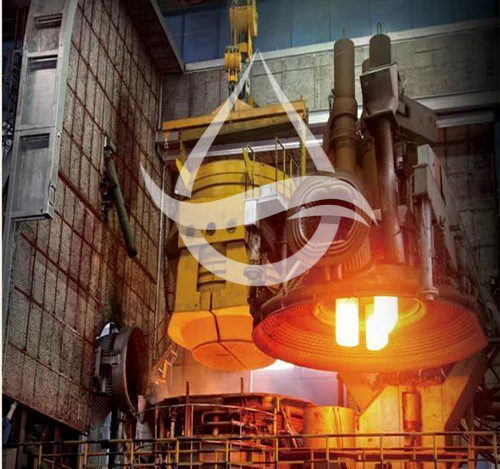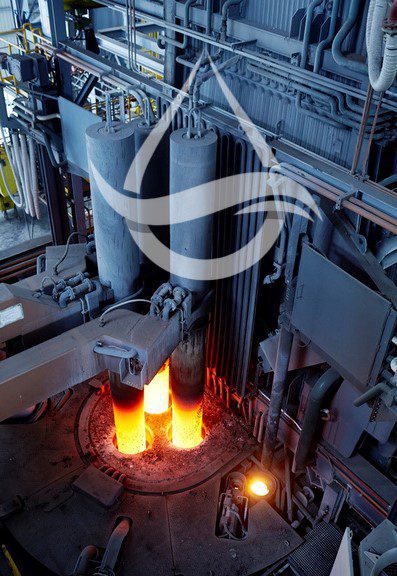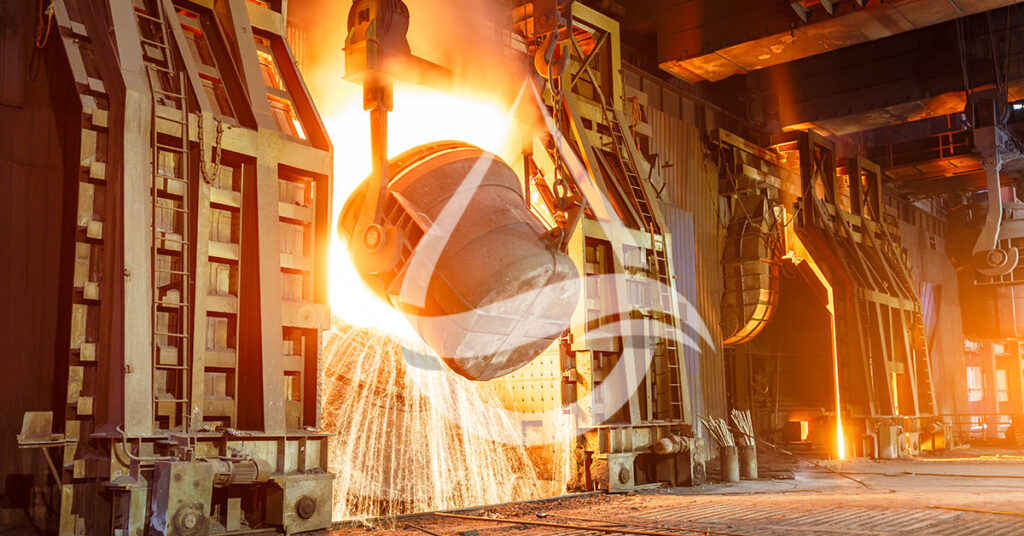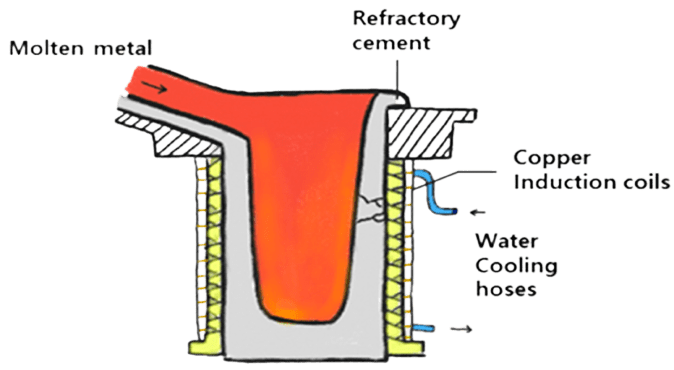Introduction to inductive arc furnaces and EBT value
Introduction to inductive arc furnaces and EBT value
inductive arc furnaces and EBT value
Inductive arc furnaces play a vital role in various industrial processes, particularly in the melting and refining of metals. To ensure optimal performance and efficiency, maintaining the EBT (Eccentric Bottom Tapping) value of these furnaces is essential. The EBT value refers to the distance between the furnace’s electrode and the molten bath. However, numerous challenges arise in sustaining the desired EBT value, such as erosion, wear, and refractory lining degradation. In recent years, the usage of olivine sand as a filling material for the EBT value has gained significant attention due to its promising properties. This article explores the potential of olivine sand as an effective solution for maintaining the EBT value in inductive arc furnaces. It delves into the benefits, experimental studies, application procedures, performance evaluation, and future prospects of using olivine sand as an EBT filler.
Introduction to inductive arc furnaces and EBT value
?What are inductive arc furnaces
Inductive arc furnaces are a type of electric arc furnace used for melting metals and alloys. They utilize the principle of electromagnetic induction to generate heat and create an electric arc between the electrodes and the charge material.
Understanding the importance of EBT value
The EBT (Eccentric Bottom Tapping) value refers to the distance between the furnace hearth and the tapping hole. This measurement is crucial for maintaining efficient operations in the furnace. It affects the metal flow, power consumption, and overall furnace performance. Maintaining an optimal EBT value is essential for ensuring smooth metal tapping and minimizing downtime.
Challenges with maintaining the EBT value
Factors affecting the EBT value
Several factors can influence the EBT value in inductive arc furnaces. These include the erosion and wear of the furnace lining, excessive refractory material build-up, and irregular tapping practices. Inadequate maintenance and improper furnace operation can lead to deviations in the EBT value.
Consequences of low EBT value
A low EBT value can have detrimental effects on the furnace’s performance. It can cause reduced metal flow during tapping, resulting in longer tapping times and decreased productivity. Additionally, low EBT values can lead to increased energy consumption, diminished refractory lining durability, and even potential damage to the furnace structure.
Exploring the potential of olivine sand as a filling material
Introduction to olivine sand
Olivine sand is a natural mineral consisting mainly of magnesium iron silicate. It is widely recognized for its high melting point, high thermal conductivity, and excellent resistance to thermal shock. These properties make it a promising material for various industrial applications, including in inductive arc furnaces.

Properties and characteristics of olivine sand
Olivine sand features exceptional heat transfer capabilities, which help in maintaining a uniform temperature distribution within the furnace lining. It also possesses a high thermal stability, allowing it to withstand the extreme conditions inside the furnace. Furthermore, olivine sand’s low thermal expansion minimizes the risk of cracking or spalling in the lining, ensuring its durability.
Benefits and advantages of using olivine sand
Enhanced thermal conductivity
One of the significant advantages of using olivine sand as a filling material is its enhanced thermal conductivity. This property allows for efficient heat transfer within the furnace lining, resulting in improved melting performance and reduced energy consumption. The effective heat distribution helps maintain a stable EBT value and enhances overall furnace productivity.
Improved heat transfer and refractory lining durability
By using olivine sand, the heat transfer within the furnace can be optimized, ensuring uniform temperature distribution and preventing hotspots or cold areas. This leads to enhanced refractory lining durability, as the uniform heat distribution reduces the stress and strain on the lining, minimizing the risk of premature failure. Moreover, olivine sand’s resistance to thermal shock helps in reducing wear and erosion of the lining, prolonging its lifespan.
In conclusion, the utilization of olivine sand as a filling material in inductive arc furnaces offers numerous advantages, including enhanced thermal conductivity, improved heat transfer, and increased refractory lining durability. By considering the unique properties of olivine sand, operators can optimize the EBT value and achieve more efficient and reliable furnace operations.

Experimental studies on the effectiveness of olivine sand
Methodology and experimental setup
In order to assess the effectiveness of olivine sand as a filling material for the EBT (Electrode Breakdown Time) value of inductive arc furnaces, a series of experimental studies were conducted. The methodology involved setting up a controlled environment that replicated the conditions inside the furnace.
Results and analysis
Results of the experimental studies indicated promising outcomes for the usage of olivine sand. EBT value stability was significantly improved when olivine sand was used as a filler. The analysis revealed that the unique properties of olivine sand, such as its high melting point and low thermal expansion, contributed to its effectiveness in maintaining a stable EBT value.
Application and implementation of olivine sand in inductive arc furnaces
Procedures for using olivine sand as EBT filler
To incorporate olivine sand as an EBT filler in inductive arc furnaces, specific procedures need to be followed. These include accurately measuring and distributing the olivine sand in the designated areas, ensuring proper mixing with other materials, and optimizing the filling process to achieve the desired results.
Considerations for integrating olivine sand into furnace operations
While olivine sand shows promising results, there are certain considerations to keep in mind when integrating it into furnace operations. Factors such as the overall furnace design, temperature control, and maintenance protocols should be taken into account to ensure smooth integration of olivine sand as an EBT filler.

Performance evaluation and comparison with traditional filling materials
Assessing the impact of olivine sand on EBT value stability
In order to evaluate the performance of olivine sand as an EBT filler in inductive arc furnaces, the impact on EBT value stability needs to be assessed. Comparative measurements and analysis can be conducted to determine the extent to which olivine sand outperforms traditional filling materials in maintaining a consistent EBT value over time.
Comparative analysis of olivine sand with other fillers
However, Aside from assessing EBT value stability, a comparative analysis can also be carried out to compare the overall performance of olivine sand with other commonly used fillers in inductive arc furnaces. Factors such as cost-effectiveness, availability, and environmental impact can be considered to provide a comprehensive evaluation of olivine sand’s effectiveness in comparison to its counterparts.
Conclusion and future prospects of olivine sand in EBT filling for inductive arc furnaces
In conclusion, the experimental studies and analysis demonstrate the potential of olivine sand as a reliable filler for maintaining the EBT value in inductive arc furnaces. Its unique properties and improved stability make it a promising alternative to traditional fillers. However, further research and long-term performance evaluation are needed to fully understand the benefits and potential drawbacks of olivine sand in EBT filling. With continuous advancements in material science, olivine sand holds the potential for future enhancements and improvements in the efficiency of inductive arc furnaces.
Conclusion and future prospects of olivine sand in EBT filling for inductive arc furnaces
In conclusion, the utilization of olivine sand as a filling material for maintaining the EBT value in inductive arc furnaces offers several advantages. Its enhanced thermal conductivity and improved heat transfer properties contribute to better furnace performance and increased refractory lining durability. Experimental studies have demonstrated its effectiveness in stabilizing the EBT value. Furthermore, the application and implementation of olivine sand in furnace operations have been found to be feasible. While further performance evaluations and comparative analyses are necessary, olivine sand shows great promise as a reliable and cost-effective alternative to traditional filling materials. As industries continue to seek sustainable and efficient solutions, olivine sand holds significant potential for the future of EBT filling in inductive arc furnaces.
FAQ
Is olivine sand a suitable replacement for other filling materials in inductive arc furnaces
By the way, Olivine sand has shown promising results as a filling material for maintaining the EBT value in inductive arc furnaces. Its enhanced thermal conductivity and improved heat transfer properties make it a viable alternative to traditional fillers. However, further comparative analysis and performance evaluations are necessary to determine its complete suitability for specific furnace setups.
? How is olivine sand applied and integrated into furnace operations
The application of olivine sand as an EBT filler involves specific procedures. It is typically introduced into the furnace through designated ports or openings, allowing it to fill the desired space between the electrode and the molten bath. The integration of olivine sand into furnace operations requires careful consideration of factors such as flow rate, particle size, and distribution to ensure optimal performance.
?Can olivine sand improve the longevity of the refractory lining
One of the advantages of olivine sand is its potential to improve the durability of the refractory lining in inductive arc furnaces. By facilitating better heat transfer and reducing wear and erosion, olivine sand can help extend the lifespan of the refractory lining. However, the extent of this improvement may vary depending on the specific furnace conditions and operational parameters.
?What are the future prospects of olivine sand in EBT filling
The future prospects of olivine sand in EBT filling for inductive arc furnaces appear promising. As industries continue to seek sustainable and efficient solutions, olivine sand’s cost-effectiveness and performance benefits make it an attractive option. Further research and development efforts are expected to provide valuable insights and optimize its application, leading to wider adoption in the industry.



